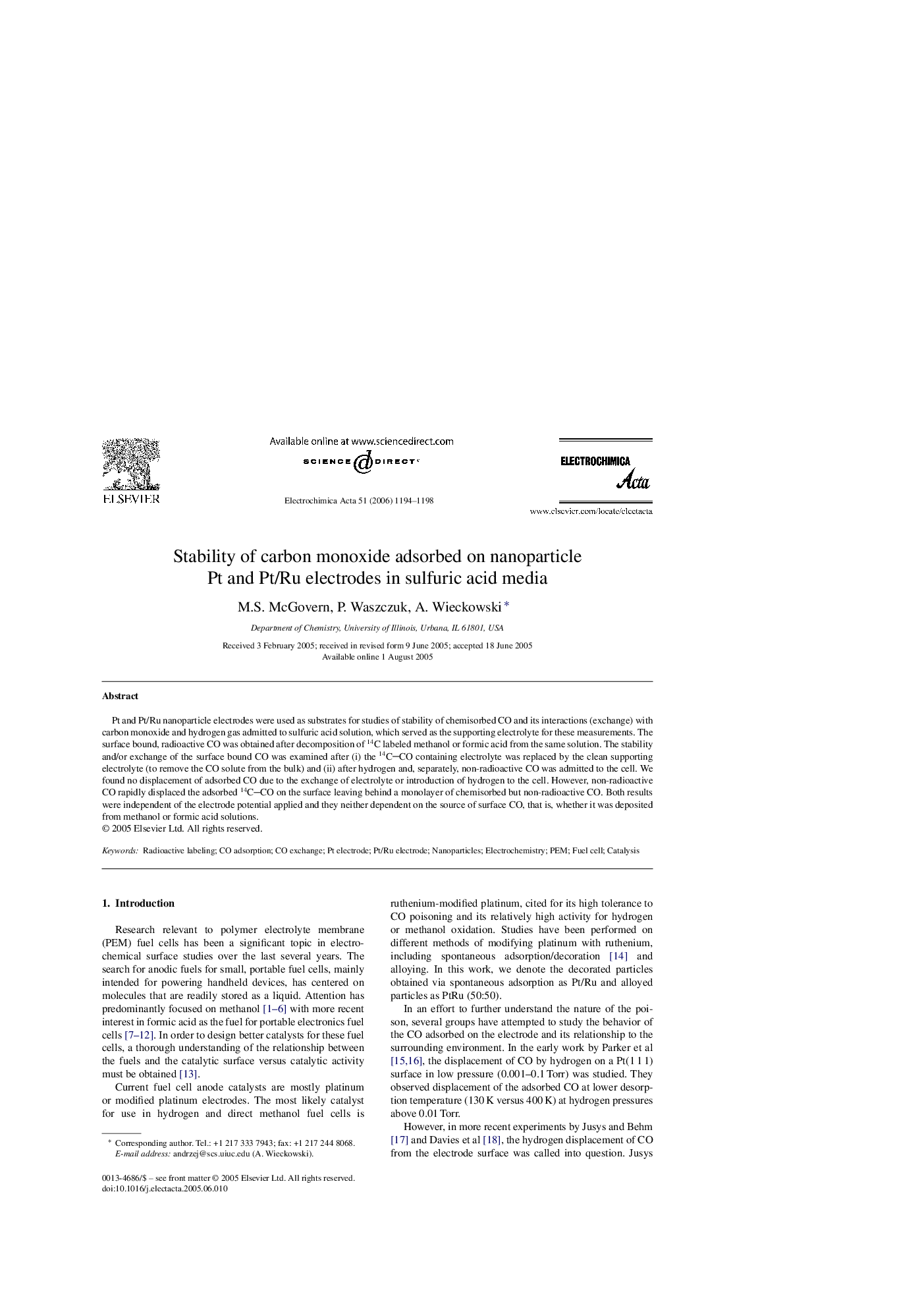| Article ID | Journal | Published Year | Pages | File Type |
|---|---|---|---|---|
| 196902 | Electrochimica Acta | 2006 | 5 Pages |
Pt and Pt/Ru nanoparticle electrodes were used as substrates for studies of stability of chemisorbed CO and its interactions (exchange) with carbon monoxide and hydrogen gas admitted to sulfuric acid solution, which served as the supporting electrolyte for these measurements. The surface bound, radioactive CO was obtained after decomposition of 14C labeled methanol or formic acid from the same solution. The stability and/or exchange of the surface bound CO was examined after (i) the 14CCO containing electrolyte was replaced by the clean supporting electrolyte (to remove the CO solute from the bulk) and (ii) after hydrogen and, separately, non-radioactive CO was admitted to the cell. We found no displacement of adsorbed CO due to the exchange of electrolyte or introduction of hydrogen to the cell. However, non-radioactive CO rapidly displaced the adsorbed 14CCO on the surface leaving behind a monolayer of chemisorbed but non-radioactive CO. Both results were independent of the electrode potential applied and they neither dependent on the source of surface CO, that is, whether it was deposited from methanol or formic acid solutions.
